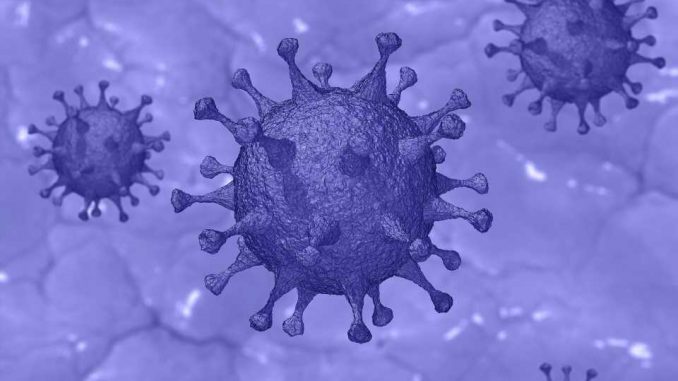

High-dose anticoagulation can reduce deaths by 30 percent and intubations by 25 percent in hospitalized COVID-19 patients who are not critically ill when compared to the standard treatment, which is low-dose anticoagulation. These are the significant findings from the large-scale international “FREEDOM” trial, led by Valentin Fuster, MD, Ph.D., President of Mount Sinai Heart and Physician-in-Chief of The Mount Sinai Hospital, and General Director of the Spanish National Center for Cardiovascular Research (CNIC).
The study results were announced Monday, March 6, in a Late Breaking Clinical Trial presentation at the American College of Cardiology Scientific Sessions Together with World Congress of Cardiology (ACC.23/WCC) in New Orleans and simultaneously published in the Journal of the American College of Cardiology.
“What we learned from this trial is that many patients hospitalized with COVID-19 with pulmonary involvement, but not yet in the intensive care unit (ICU), will benefit from high-dose subcutaneous enoxaparin or oral apixaban to inhibit thrombosis and the progression of the disease,” says Dr. Fuster. “This is the first study to show that high-dose anticoagulation may improve survival in this patient population—a major finding since COVID-19 deaths are still prevalent.”
This work was prompted by the discovery early in the pandemic that many patients hospitalized with COVID-19 developed high levels of life-threatening blood clots. Mount Sinai research showed that treatment with prophylactic (low-dose) anticoagulation was associated with improved outcomes both in and out of the intensive care unit among hospitalized COVID-19 patients. Researchers further observed that therapeutic (high-dose) anticoagulation might lead to better results.
Then, they designed the FREEDOM COVID Anticoagulation Strategy Randomized Trial to look further into the most effective regimen and dosage for improving outcomes of hospitalized COVID-19 patients who are not critically ill.
Researchers enrolled 3,398 hospitalized adult patients with confirmed COVID-19 (median age 53) from 76 urban and rural hospitals across 10 countries—including hospitals within the Mount Sinai Health System in New York City—between August 26, 2020, and September 19, 2022.
Patients were not in the ICU or intubated, and approximately half of them had signs of COVID-19 impacting their lungs with acute respiratory distress syndrome (ARDS). Patients were randomized to receive doses of three different types of anticoagulants within 24-48 hours of being admitted to the hospital and followed for 30 days.
Equal numbers of patients were treated with one of three different drug regimens: prophylactic subcutaneous enoxaparin, therapeutic subcutaneous enoxaparin, and therapeutic oral apixaban. They compared the combined therapeutic groups to the prophylactic group.
The primary endpoint was a combination of death, requirement for ICU care, systemic thromboembolism, or ischemic stroke at 30 days. This endpoint was not significantly reduced between the groups. However, 30-day mortality was lower for those treated with therapeutic anticoagulation (high dose) compared with those on the prophylactic regimen (low dose).
Seven percent of patients treated with the prophylactic anticoagulation died within 30 days compared with 4.9 percent of patients treated with therapeutic anticoagulation—an overall reduction of 30 percent. The need for intubations was also reduced in the therapeutic group: 6.4 percent of patients on the therapeutic regimen were intubated within 30 days compared with 8.4 percent in the prophylactic group—a 25 percent reduction.
The study showed therapeutic anticoagulation to be especially beneficial for patients with ARDS, a condition where COVID-19 damages the lungs. Among patients with ARDS at the time of hospital admission, 12.3 percent in the prophylactic anticoagulation group died within 30 days compared with 7.9 in the therapeutic anticoagulation group.
All groups had low bleeding rates, and there were no differences between the two therapeutic blood thinners for safety and efficacy.
“This is an important study for patients with COVID-19 who are sick enough to require hospitalization but not so ill as to require ICU management. In this group of patients with radiologic evidence of ARDS, therapeutic dose anticoagulation prevents disease progression, especially the need for intubation, and saves lives. This is especially important as COVID-19 is not going away. Even in the United States, the current number of daily deaths, although much lower than at the peak of the pandemic, is twice that compared with just one year ago. And in other countries COVID-19 is raging,” says co-Principal Investigator Gregg W. Stone, MD, Director of Academic Affairs for the Mount Sinai Health System and Professor of Medicine (Cardiology), and Population Health Science and Policy, at Icahn Mount Sinai.
More information:
Gregg W. Stone et al, Anticoagulation Strategies in Non-Critically Ill Patients Hospitalized with COVID-19: A Randomized Clinical Trial, Journal of the American College of Cardiology (2023). DOI: 10.1016/j.jacc.2023.02.041
Journal information:
Journal of the American College of Cardiology
Source: Read Full Article